#vinyl letters
Text
Vinyl letters are a versatile and cost-effective way to add a personalized touch to your business, home, or event. Whether you're looking to create custom signage, decorate your walls, or add branding to your storefront, vinyl letters offer endless possibilities. In this guide, we'll explore everything you need to know about vinyl letters, from their benefits and uses to how to create your own custom designs.
0 notes
Text

PlanIT Print Works is the leading Desert Digital Print provider and we provide a different class of service. Sure we deliver high-quality work, we get it right the first time and we meet deadlines. To us, that's the minimum standard. Our commitment to you and your project starts well before the order. Our goal is to understand your project from the start so we can offer the best print solution for your specific needs. Adding value for you is our expression of A Different Class of Service. We handle all types of jobs - small, commercial, B2B, and custom digital creations. Serving Palm Desert, Palm Springs, La Quinta, Indio, Thousand Palms, Cathedral City, Indian Wells, Bermuda Dunes, Rancho Mirage and surrounding areas in the Coachella Valley. Check out our showroom and see what we have to offer!
We got you covered, whether you need reprographics, blueprint printing, commercial printing, large format printing, architectural plans, construction plans, digital prints, banners, branded signs, business cards, flyers, photo printing, marketing material, custom print creations, displays+signage, tradeshow displays, convention displays and more. We're more than just print guys! We are one part production house, one part creative studio.
#wood letters#vinyl stickers#vinyl letters#vinyl banners#small format printing#printed stickers#PLASTIC LETTERS#legal printing & scanning#large format printing#cut vinyl graphics#custom window coverings#construction documents#blue prints#adhesive labels#PromotionalPrinting
0 notes
Video
youtube
Searching 4 Solving my falling Numbers
0 notes
Text

#youtube#redlettermedia#red letter media#rich evans#jay bauman#gorilla interrupted#half in the bag#mike stoklasa#best of the worst#jack packard#thrash metal#the office#trippy#the beatles#the dark knight#tech#pop vinyl#urban outfitters#thumbs up#step up#uma thurman#unboxing#uk#us#undertale#usa#violin#video game#viral#video games
15 notes
·
View notes
Note
I can feel your pain so much, about the Clancy Vinyl!
I've had the yellow Amazon exclusive vinyl sitting in my wishlist for weeks now, but I tragically have no income at the moment, so I just keep staring at it wistfully, dreaming of when I can finally put it in my cart.
(*Siiigh*) One day, it will be mine...
noooo, that's the worst! 😭
bro, i am manifesting this for you. one day the vinyl will be yours. the time will come sooner than you think. 🕯✨️🫶
...i actually saw it for the first time at the store today and i still wanna cry 😓 not that i went there specifically to see if they have it, i just love torturing myself
#i do have the cd tho#it's just... so pretty#but the vinyl!#i wanna buy in and hang it on my wall#it's not funny#🥺#anon#twenty one pilots#clancy#i saved every letter you wrote me*
7 notes
·
View notes
Text





DEAR SOMEBODY: AN AUDIO LETTER BY JHARRY
STREAMING NOW ON ALL PLATFORMS!!
#JHaryr#dear somebody#an audio letter by JHarry#madlib#hiphop#mfdoom#jdilla#rap#boombap#mpc#beats#music#madvillain#sp#madvillainy#undergroundhiphop#quasimoto#lofihiphop#freddiegibbs#lofi#vinyl#producer#beatmaker#stonesthrow#doom#hiphopmusic#earlsweatshirt#tylerthecreator#viktorvaughn#kanyewest
7 notes
·
View notes
Text


unhinged potential paramore gig outfit inspired by the very happy coincidence that a lyric in my fave song from this is why works stupidly well with the iconic titsoak line from twilight
#not this specific jacket + the lettering would be glittery vinyl but you get the idea#to be openly cringe is to be free etc etc right#personal
17 notes
·
View notes
Text
i know your wife,
and she wouldn’t mind
cola — lana del rey
#lana del rey#ldr#ldr problems#ldr unreleased#cola lana del rey#lana del rey quotes#poetry#quotes#love poetry#love quotes#phoebe bridgers#creative writing#lost love letters#writing#donna tartt#lana del rey vinyl#lizzy grant#lana#lana stan
32 notes
·
View notes
Text
Electronic Message Centers: Revolutionizing Business Signage
In today’s fast-paced, technology-driven world, businesses are constantly seeking innovative ways to capture attention and communicate effectively with their audience. Electronic Message Centers (EMCs) have emerged as a dynamic solution to meet these needs, offering versatility, engagement, and real-time updates. This blog delves into the benefits and applications of EMCs, and why they are becoming an essential tool for modern businesses.
What are Electronic Message Centers?
Electronic Message Centers are digital displays that use LED technology to showcase messages, advertisements, and information. Unlike traditional static signs, EMCs can be programmed to display a variety of content, including text, images, animations, and videos. This flexibility allows businesses to convey multiple messages and update their content instantly based on current promotions, events, or important announcements.
Benefits of Electronic Message Centers
Dynamic Content Display: One of the most significant advantages of EMCs is their ability to display dynamic content. Businesses can easily change messages, images, and videos to keep their audience engaged. This capability is particularly useful for promoting special offers, sales events, or new products. The ability to rotate messages ensures that your display remains fresh and relevant, capturing the attention of passersby.
Real-Time Updates: EMCs allow for real-time updates, which is crucial for businesses that need to communicate timely information. For instance, a restaurant can update its menu specials or operating hours, while a retail store can announce flash sales or store events. The ease of updating content means businesses can respond quickly to changing conditions or customer needs.
Enhanced Visibility: The bright, high-resolution displays of EMCs ensure high visibility, even in low-light conditions or adverse weather. This makes them highly effective for attracting attention from a distance and standing out in a crowded marketplace. Their ability to display vibrant colors and moving graphics further enhances their impact.
Cost-Effective Advertising: While the initial investment in an EMC may be higher than traditional signage, the long-term benefits often outweigh the costs. With EMCs, businesses can avoid the recurring expenses of printing and installing new signs. The flexibility to change messages digitally means that businesses can adapt their advertising strategies without additional costs.
Increased Engagement: Interactive features and engaging content displayed on EMCs can drive customer interaction. For example, businesses can run social media promotions, interactive polls, or contests that encourage audience participation. This not only enhances customer engagement but also fosters a sense of community around the brand.

Applications of Electronic Message Centers
Retail Stores: Retailers can use EMCs to showcase promotions, sales, and new arrivals. The ability to update content frequently ensures that customers are always informed about the latest offers. Additionally, EMCs can be used to highlight customer testimonials or loyalty program updates.
Restaurants: For restaurants, EMCs can display daily specials, menu items, and nutritional information. The visual appeal of moving graphics can entice customers and create a more inviting atmosphere.
Educational Institutions: Schools and universities can use EMCs to communicate important announcements, event schedules, and emergency alerts. The ability to display educational content and news updates helps keep students, staff, and visitors informed.
Event Venues: Event venues can utilize EMCs to promote upcoming events, ticket availability, and venue information. The versatility of EMCs allows for creative and eye-catching displays that enhance the overall event experience.
Public Information: EMCs in public spaces can provide important information such as weather updates, public transportation schedules, and emergency alerts. Their visibility ensures that critical information reaches a wide audience effectively.
Conclusion
Electronic Message Centers represent a significant advancement in signage technology, offering businesses a powerful tool to communicate dynamically and effectively. With their ability to display engaging content, provide real-time updates, and enhance visibility, EMCs are an invaluable asset for any business looking to make a strong impression and stay connected with their audience. As technology continues to evolve, the potential applications and benefits of EMCs will only grow, solidifying their role as a cornerstone of modern business signage. For more details visit our website: www.a-acesignco.com
#Channel Letter Signs#Parking Lot Lighting#Channel Letter Sign Company#Lighted Channel Letter#Neon Signs Near Me#Monument Signs#Vinyl Letters Signs#Dimensional Letters Signs#Typical Architectural Signs#Pylon Signs Near Me#Electronic Message Centers#Vehicle Lettering Signs#Window Awnings Near Me#Lighted Cabinets Signs#Sandblasted Signs#Blade Signs Near Me#Aluminum Signs Near Me#Wood Signs Near Me#Sign Repair & Sign Service#Digital Printing#Krane Service
2 notes
·
View notes
Text
Unlocking the Power of Vinyl Letters: A Complete Guide

Vinyl letters are a versatile and cost-effective solution for businesses looking to enhance their brand visibility and communicate their message effectively. In this comprehensive guide, we'll explore everything you need to know about vinyl letters, from their benefits and uses to the different types available and how to get started with your own custom vinyl letter signage.
What are Vinyl Letters?
Vinyl letters are adhesive-backed letters made from durable vinyl material. These letters are cut individually, allowing for precise customization and flexibility in design. Vinyl letters are available in a wide range of colors, fonts, and sizes, making them suitable for a variety of signage applications.
Benefits of Vinyl Letters
Cost-Effective: Vinyl letters are an affordable signage option, making them ideal for businesses with budget constraints.
Versatility: Vinyl letters can be used both indoors and outdoors and are suitable for a wide range of surfaces, including walls, windows, vehicles, and more.
Customization: Vinyl letters offer endless customization options, allowing you to choose from a variety of fonts, colors, and sizes to create a sign that perfectly reflects your brand.
Durability: Made from high-quality vinyl material, vinyl letters are weather-resistant and designed to withstand the elements, ensuring that your signage looks great for years to come.
Popular Uses for Vinyl Letters
Vinyl letters can be used for a wide range of signage applications, including:
Storefront Signage: Use vinyl letters to display your business name, hours of operation, and contact information on your storefront window or door.
Vehicle Lettering: Advertise your business on the go with vinyl lettering for your vehicle. Display your business name, logo, and contact information on your car, truck, or van.
Interior Signage: Guide customers through your space with vinyl lettering for interior signage, including directional signs, wall decals, and more.
Promotional Signage: Create eye-catching promotional signage for sales, events, and promotions with custom vinyl lettering.
How to Get Started with Vinyl Letter Signage
Getting started with vinyl letter signage is easy! Here's what you'll need to do:
Choose Your Design: Decide on the text, font, color, and size of your vinyl letters.
Select Your Material: Choose the type of vinyl material that best suits your needs, including standard vinyl, reflective vinyl, metallic vinyl, and more.
Place Your Order: Contact a reputable signage company to place your order for custom vinyl letter signage.
Installation: Once your vinyl letters are ready, follow the manufacturer's instructions to install them on your desired surface.
Why Choose Us for Your Vinyl Letter Signage Needs
At Sign Resources of NC, we specialize in designing and manufacturing high-quality vinyl letter signage for businesses of all sizes. With our expert design team and state-of-the-art equipment, we'll work with you to create custom vinyl lettering that meets your unique needs and budget.
Ready to unlock the power of vinyl letter signage for your business? Contact us today to learn more about our vinyl lettering options and discover how we can help you enhance your brand visibility and communicate your message effectively!
1 note
·
View note
Text
.
#y'all ever spent a whole afternoon trying to identify a font or are u normal#literally whoever said that the font ashton used for botd is 'just a generic font' was Wrong it literally ISN'T#at least not the caligraphy font that the lower case is in that font is Impossible to find#every time i find a letter that matches the weirdness of one of the letters like#the h that curves in or the o that is literally sideways what is going On with that o#like neither of them match the other one and i'm exhausted#and when i tried to find a tool to look it up they're all like we used ai to find it from a picture!#literally fuck off i'm so tired.....#graphic design is my passion but at what Cost#edit: i am giving up on my dreams of having a pretty blood on the drums cd case that looks good :(#just gonna burn a cd and write what's on it in cd marker (not sharpie bc that might cause the cd to deteriorate faster..)#when someone gets the vinyl pls send me pics so i can live vicariously through u 🥺
2 notes
·
View notes
Text
🎶🔉🔊📝📝📝📝💌📬🎶
63 notes
·
View notes
Text

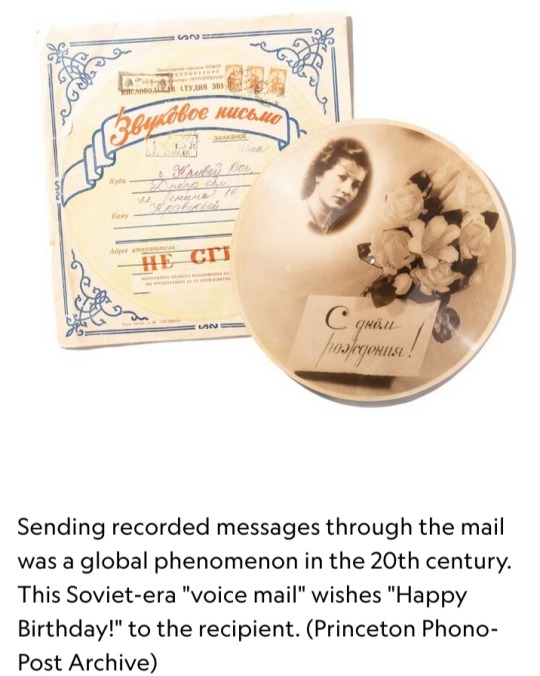
“Hello Mother, Dad, and Blanche,” a quiet voice says above the cracks and pops of an old vinyl record, which has clearly been played many times over.
“How’s everything at home? I’m recording this from Dallas…from this very little place where there are pinball machines and many other things like that…”
The disc is small, seven inches across, dated October 1954.
The faded green label shows that the speaker’s name is “Gene,” the recording addressed to “Folks.”
Gene suggests in his minute-long message that he is traveling — “seeing America” — and tells his family not to worry about him.
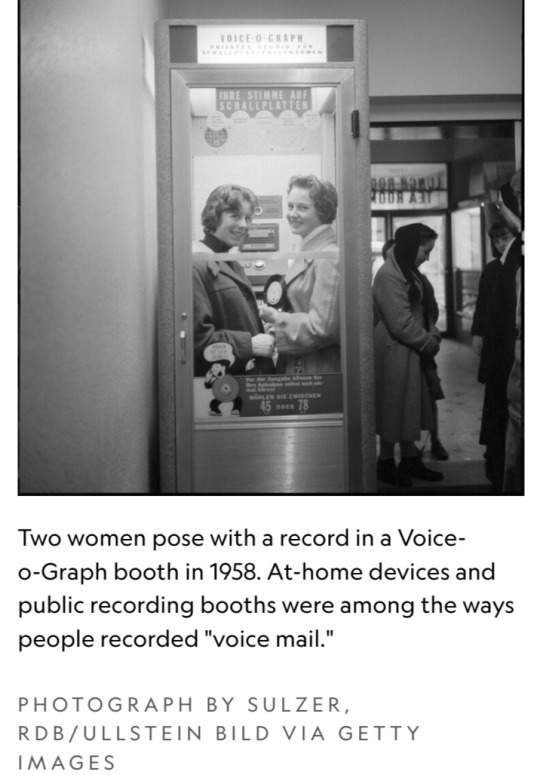
“I should complete my trip sometime around Thanksgiving,” he continues in a second recording made in Hot Springs, Texas, not too long after his first one.
“I hope you received my letter and I, in turn, hope to receive some of the letters that you sent me. It’s been a very long time since we’ve corresponded, and I’m looking forward to hearing from you very, very much.”
This largely forgotten sound is one of the world’s early “voice mails.”
During the first half of the 20th century, these audio letters and other messages were recorded largely in booths, pressed onto metal discs and vinyl records, and mailed in places all over the world.
Best known today for playing music at home, record players were then being used as a means of communication over long distances.
Reach out and touch someone
The idea of transporting a person’s voice had loomed large in the human imagination for some three centuries before it was finally achieved with the invention of the phonograph in the late 19th century.
Historical documents from the Qing Dynasty in 16th-century China suggest the existence of a mysterious device called the “thousand-mile speaker,” a wooden cylinder that could be spoken into and sealed, such that the recipient could still hear the reverberations when opening it back up.

Top: A Kodisk horn and recording stylus attachment in the Princeton Phono-Post Archive was used in the early 1920s for home recordings on pre-grooved blank metal discs using a normal gramophone.
Bottom: A Gem Recordmaker attachment at the Princeton Phono-Post Archive was used in the 1950s for children to "make your own permanent records" on blank six-inch discs using their own gramophone at home.
When Thomas Edison invented the phonograph in 1877, he envisioned a device that could reproduce music and even preserve languages.
He saw, in its earliest uses, the potential to transform business, education, and timekeeping.
He even imagined a so-called “Family Record” — a “registry of sayings, reminiscences, etc., by members of a family in their own voices and of the last words of dying persons.”
But correspondence was at the top of his mind: Edison thought his invention could be used for dictation and letter writing.
In the late 19th century, handwritten letters were the most common form of everyday personal communication.
The telegram, which later became popular in the early 1900s, was used for shorter, urgent messages.
While Alexander Graham Bell made the first transcontinental telephone call from New York to San Francisco in 1915, long-distance calling remained expensive and inaccessible to most ordinary people until the 1950s.
Voice-O-Graph
The gramophone, a later form of the phonograph developed by Emile Berliner in 1887, provided a first possibility for recorded sound being used for long distance communication.
It made recording and playback possible on discs, which were easier to store, reproduce, and send.
The earliest known record to have been put in the mail as a means of correspondence would be sent in the early 1920s, but the practice of sending voice mail really got going across the world in the 1930s and 1940s.
It was personal and affordable as long as customers could find a recording booth or home device.
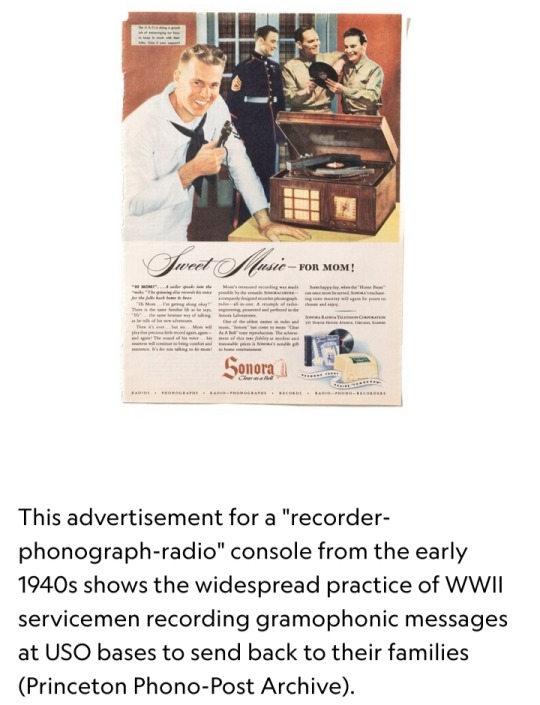
In the early 1940s, the American company Mutoscope rolled out the Voice-O-Graph machine, which vastly popularized voice mail in the United States.
It was a tall wooden cabinet, shaped not unlike a modern-day photo booth, that declared, on one side: RECORD YOUR OWN VOICE!
Invented by Alexander Lissiansky, these recording booths were marketed as novelties and set up at common gathering places: amusement parks, boardwalks, tourist attractions, transportation hubs, military bases and U.S.O. events.
There was a Voice-O-Graph machine at the top of the Empire State Building, on the piers of San Francisco, and by the Mississippi River in New Orleans.
The speaker entered the Voice-O-Graph, inserted a couple of coins, and had a few minutes to record a message.
Then, out popped a record the size of a 45-rpm single that was not only durable enough to be played multiple times, but also flimsy and lightweight enough to send in the mail for little more than the cost of a regular letter.
Oftentimes, the envelopes themselves would come included.
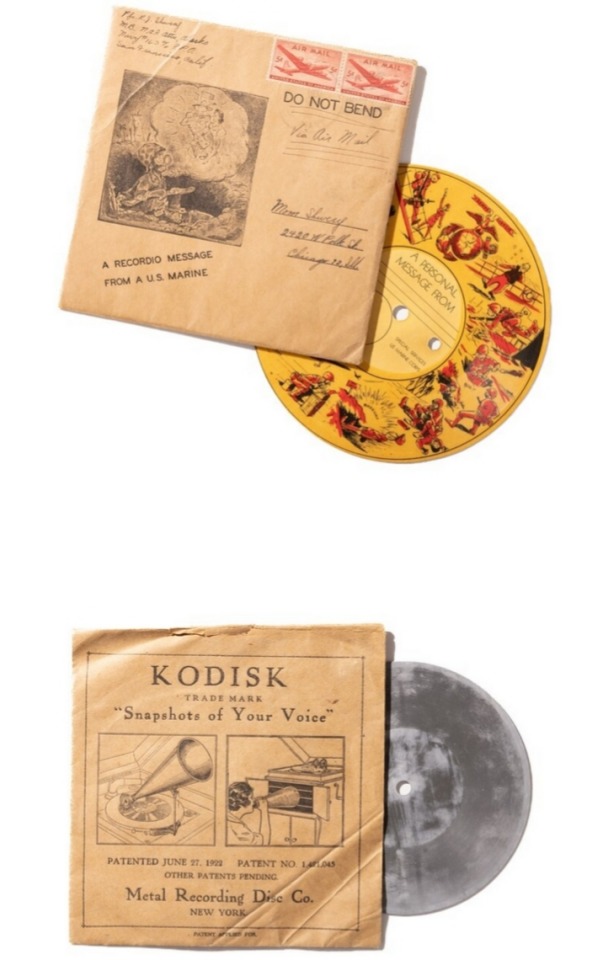
Top: A soldier sends a Christmas greeting to his mother in Chicago.
The envelope, which came with the record, depicts a soldier anxiously imagining his wife with another man in his absence (Princeton Phono-Post Archive).
Bottom: Pre-grooved metal discs were used for domestic gramophone recordings in the early 1920s.
The paper sleeve illustrates the two methods of recording: one, depicted on the right, involved using a megaphone to shout into the phonograph's horn; the other method, depicted on the left, involved using a Kodisk-branded external horn and recording stylus, which would be attached to one's home gramophone and is shown in another image above (Princeton Phono-Post Archive).

Top: A “Recordio” home-recording demonstration disc from the 1940s illustrating five different models of radio-recording-playback consoles made by the Wilcox-Gay Corporation, ranging from massive living-room consoles to portable “airplane type” suitcase versions (Princeton Phono-Post Archive).
Bottom: Wilcox-Gay Recordio demonstration picture disc featuring the violinist and radio star David Rubinoff (1897-1986) and his $100,000 Stradivarius making a recording at home (Princeton Phono-Post Archive).
Photographs by Rebecca Hale, NGM Staff
Words of love
The messages people sent would range in emotion — from excitement to nervousness, joy to embarrassment.
Travelers would make recordings to update family and friends on long trips.
Especially during World War II, where there were recording booths on military bases in nearly every theater of the conflict, soldiers used voice mail to reassure loved ones with the sound of their voice, even if some them would never return home.
There are countless “voice mail valentines,” surprisingly intimate audio love letters.
Many of the messages, sent from far away, express longing.
“You keep your chin up,” a voice named Leland tells his wife in a recording dated 1945, from a booth in New York City.
“All of you keep those chins up. Mike, all of us will all be home, be home where we can pick up, and carry on as we did before.”
In one recording made in Argentina in the 1940s, a man plays the violin before he recites a lullaby.
“Sleep, sleep my darling girl,” the man says. “It’s getting late.”
Phono-Post archive
Back then, families could listen to the messages on repeat — gathering together around the record player whenever one arrived.
They could play it proudly again anytime there were guests, but with each play, the needle would scrape away at the delicate grooves until the message could hardly be heard any longer.

Today at Princeton University, professor and media theorist Thomas Levin is dedicated to preserving these sounds of the past.
He maintains the world’s only archive dedicated to what he calls the “Phono-Post.”
At the height of the phenomenon, there were perhaps thousands of Voice-O-Graph machines in America and many more recording stations across the world.
“Millions of these audio letters were sent across the United States, South America, in Europe, in Russia, in China,” Levin says.
Levin’s office is crammed with many of the items he has collected over the years, including books, posters, and other ephemera—as well as, of course, the records themselves.
Levin has already digitized some 3,000 of the discs, all of which are tucked into clear plastic sleeves and carefully catalogued.
He keeps them filed into cabinets and stackable storage bins in a temperature-controlled room.
Thousands more records lie waiting to be processed in a nearly seven-year backlog that keeps growing as Levin continues collecting.
He employs AI bots that constantly comb through eBay pages and bid for items on his behalf.
Sometimes, he will come across people selling, knowingly or unknowingly, the voice of a relative.
“I write to them and I say, you’re selling the voice of your grandfather?’” Levin says.
“There’s not a sense of the value of the voice, such that people are willing to part with these objects.”
Still, he offers to share an MP3 file of the recording with them, and for that, they are often very grateful.
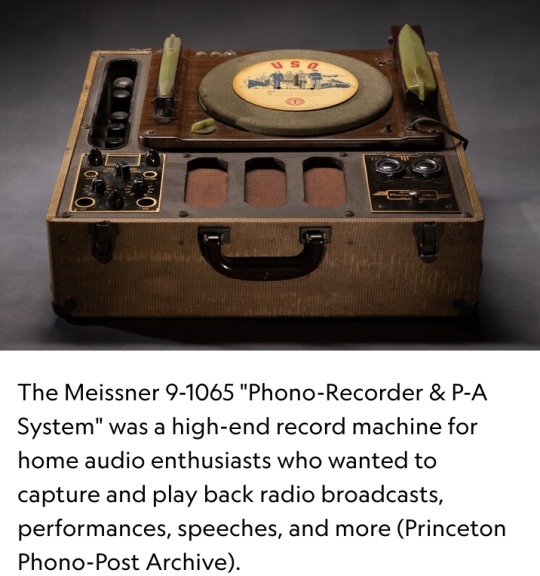
Voices of the Past
For the most part, there aren’t many celebrity voices stashed away in the Princeton Phono-Post Archive.
“The bulk of the recordings in this archive are of very unextraordinary people articulating desires, wishes, fantasies, of a very quotidian sort,” Levin says.
They are enormously telling, if one is willing to listen closely.
Much like paper letters, these audio missives can also reveal insights about particular moments in history through the accounts of individual lives lived within them, but with added layers of sensory detail.
Historical linguists are particularly interested in “voice mail” because it provides some of the earliest-ever recorded samples of how regular people spoke — their conversational vocabulary, their pronunciation and accents, their sentence structure, their intonation.
“There’s no editing. There’s no cleaning up,” Levin says. “Once the recording starts, it will run until it ends, whether you have something to say or not.”
He smiled. “If you don’t have anything to say, that says something too.”
The advent of cassette tapes in the 1960s meant that services like the Voice-O-Graph quickly fell out of fashion.
(For a few decades, people were sending long distance messages on audiocassettes, too — a practice that became particularly common for U.S. soldiers deployed in the Vietnam War.)
But this voice mail phenomenon, while short-lived, holds a significant place in the history of global communication.
“What we’re recovering now are the remnants of a chapter of media history, a cultural practice, that was huge, ubiquitous,” Levin says, “but has now been forgotten.”
For many people, these recordings were the first time they had ever recorded their own voice.
They sound nervous, even awkward, while others even sound like they are reading from a piece of paper.
Some, when faced with their very first self-recording, confronted the realization that they were leaving a highly personal trace that would likely outlive them.
“People strangely, but with remarkable regularity, talk about death,” Levin says.
“They’re writing to a future.” He pauses. “And one thing is known about that future: that they will not be a part of it.”
#voice mails#audio letters#old vinyl record#record players#phonograph#Thomas Edison#telegram#handwritten letters#Alexander Graham Bell#gramophone#Emile Berliner#Mutoscope#Voice-O-Graph#Alexander Lissiansky#Phono-Post#Princeton Phono-Post Archive#Historical linguists#cassette tapes#National Geographic
29 notes
·
View notes
Text
When you find a break up note in the Star Club Tapes record sleeve:



I scored many other Beatles vinyl today:

#the beatles#john lennon#j&p#mclennon#paul mccartney#early beatles#baby beatles#george harrison#ringo starr#revolver#twice#one is mono#vinyl#new hobby#break up letters#ron & tracy
77 notes
·
View notes
Text

Vinyl, Shine, and Rave
#bomb rush cyberfunk#jpr sketches#I started with vinyl because I really like the blocky afro hair from her design (still sort of struggled with the jacket)#shine surprisingly an easy character to draw imo (I tried to put a little sun drawing for the i letter in her name)#since she has a cartoony sun icon when whenever you start to get messages from her (dancing sidequest before joining brc)#I never played jsrf but rave’s design really reminds me of that#but the amount of details she has for the coolest cybergoth(?) big pants (I sort gave up afterwards lol)#I might alternate between drawing this style and like the post I drew red and bel in#mostly when I unlock the other characters (oldhead and other dlc characters not there because I got the switch port 😭)
13 notes
·
View notes
Text


Vinyl Lettering Pack
Vinyl lettering pack all scanned super crispy @1200 dpi. Inside the package, you'll find a .psd file loaded with every letter from A to Z, numbers 0 to 9, and a bunch of punctuation marks, all neatly organized. Each character in the PSD file comes with its own mask, so you can toggle it on or off to see every little detail.
But hey, if you're not a Photoshop wizard, no worries! I've also included a folder packed with PNG files, making it a breeze for everyone to use. Fun for anyone looking to add authentic looking letters onto posters, flyers, social media posts etc.
#Vinyl#lettering#pack#scanned#crispy#1200 dpi#PSD#A to Z#0 to 9#punctuation#mask#toggle#detail#Photoshop#PNG#authentic#posters#flyers#social media#texture#texture pack#designspiration#authentic art#poster design#photoshop#Typography#art#design#graphic design#visual design
6 notes
·
View notes